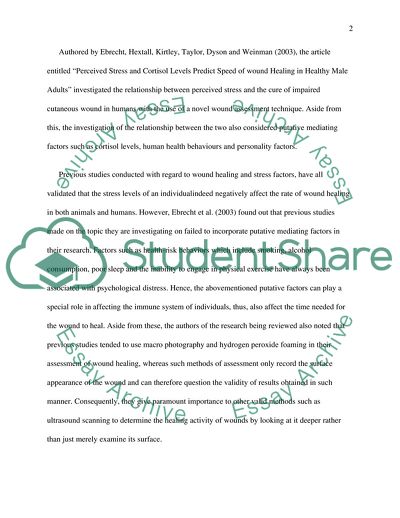Cite this document
(Analysis of Perceived Stress and Cortisol Levels Predict Speed of Essay, n.d.)
Analysis of Perceived Stress and Cortisol Levels Predict Speed of Essay. https://studentshare.org/health-sciences-medicine/1717377-critical-reviwe-of-an-article-perceived-stress-and-cortisol-levels-predict-speed-of-wound-healing-in-healthy-male-adults
Analysis of Perceived Stress and Cortisol Levels Predict Speed of Essay. https://studentshare.org/health-sciences-medicine/1717377-critical-reviwe-of-an-article-perceived-stress-and-cortisol-levels-predict-speed-of-wound-healing-in-healthy-male-adults
(Analysis of Perceived Stress and Cortisol Levels Predict Speed of Essay)
Analysis of Perceived Stress and Cortisol Levels Predict Speed of Essay. https://studentshare.org/health-sciences-medicine/1717377-critical-reviwe-of-an-article-perceived-stress-and-cortisol-levels-predict-speed-of-wound-healing-in-healthy-male-adults.
Analysis of Perceived Stress and Cortisol Levels Predict Speed of Essay. https://studentshare.org/health-sciences-medicine/1717377-critical-reviwe-of-an-article-perceived-stress-and-cortisol-levels-predict-speed-of-wound-healing-in-healthy-male-adults.
“Analysis of Perceived Stress and Cortisol Levels Predict Speed of Essay”. https://studentshare.org/health-sciences-medicine/1717377-critical-reviwe-of-an-article-perceived-stress-and-cortisol-levels-predict-speed-of-wound-healing-in-healthy-male-adults.


